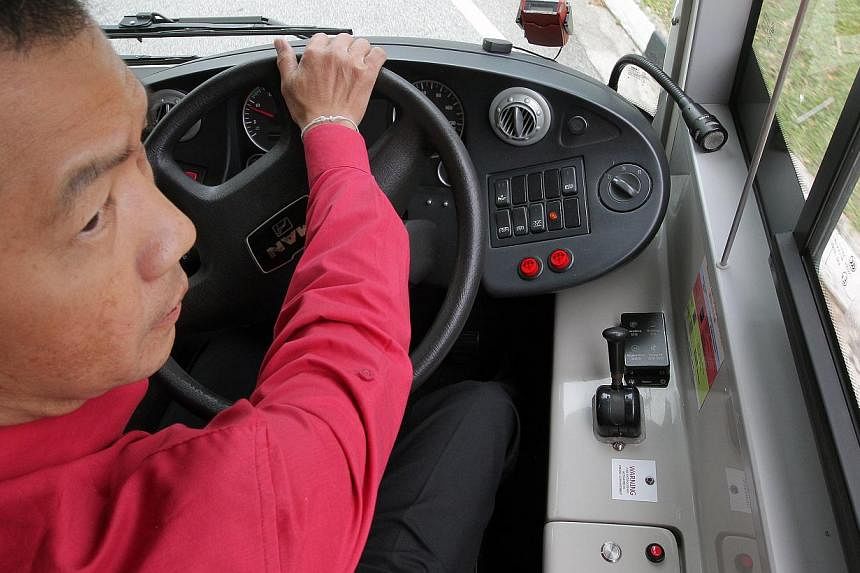SMRT has installed recorders in buses to track if its drivers are speeding or driving recklessly.
The move to use the telematics devices is part of a broader plan to improve driver behaviour so commuters have a smoother and safer ride, said SMRT Buses vice-president Tan Kian Heong.
These devices track driving behaviour in real-time, and alert drivers when they have exceeded the 60kmh speed limit, accelerate or brake too abruptly and change lanes or take a turn too sharply.
Drivers who are consistently flagged will be called up and possibly sent for defensive driving sessions.
They were previously monitored via random checks, said the public transport operator.
SMRT said it is also using big data analytics to study driving behaviour and routes, to identify areas for improvement. It tested the telematics technology provided by NEC Asia Pacific early this year, and began installing devices on its fleet of 1,200 buses in May.
This is one of several new technologies that the operator is rolling out to improve the travelling experience for commuters.
It will install new panels on the 12 buses that ply Bukit Batok service 189 by this month.
These panels, located near the front door, will display the estimated arrival time of the next bus and how crowded it is.
Together with NEC, SMRT is also using the telematics data gathered to develop a system to improve its bus operations.
This new "service control management system" allows service controllers in SMRT's bus operations control centre in Woodlands to know the exact location of each bus and the distance between them, said Mr Tan.
The plan is for the system to, in the near future, provide service controllers with solutions to ensure buses run regularly.
SMRT chief bus service controller Teo Teck Chai, 51, said the new control system has made his job easier. "The difference is in the past, the tracking of buses was not as accurate or timely."
The old system would update the position of a bus only after five minutes, compared to about 30 seconds for the new one, Mr Teo said.
SMRT's ratio of service controllers to buses is currently one controller to about 100 buses. Mr Tan said more controllers will be hired, but did not give specifics.
Rival SBS Transit, which runs a 3,300-strong bus fleet that accounts for about three-quarters of the total bus fleet here, has also beefed up its own pool of service controllers in recent years.
Asked about the cost of the new systems, Mr Tan said SMRT and NEC have moved from a "buyer-seller relationship" to partners developing new solutions to improve service standards. The firms have "not spoken about the cost" yet, he said.
He added that SMRT will find a way to integrate its new service control system with a common bus fleet management system that the Land Transport Authority will introduce by 2017.
SMRT chief bus captain Koh Soon Teck, 47, said the telematics system makes drivers more aware when they are behind the wheel, and will help them change their bad habits. "If you are too reckless when driving, it will alert you. But it won't affect a driver if he does not make mistakes," said Mr Koh, who has been with SMRT for 12 years.


